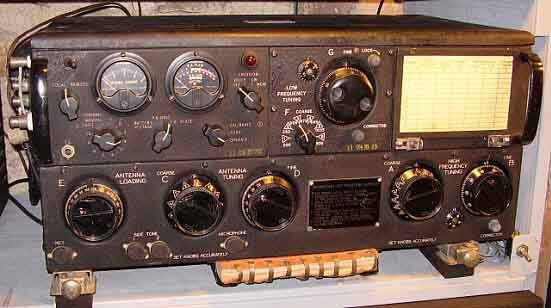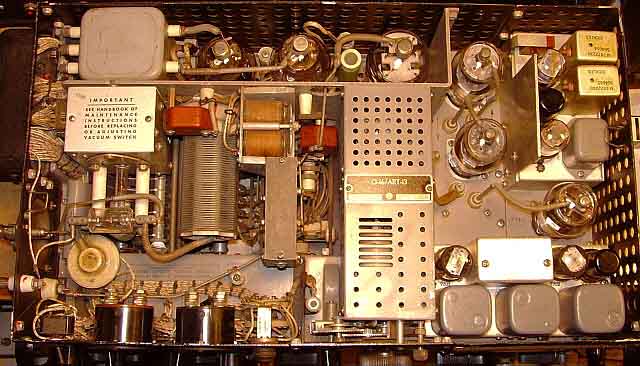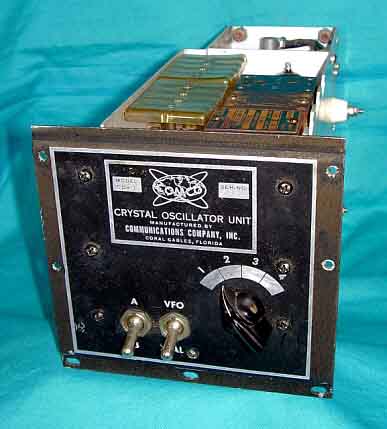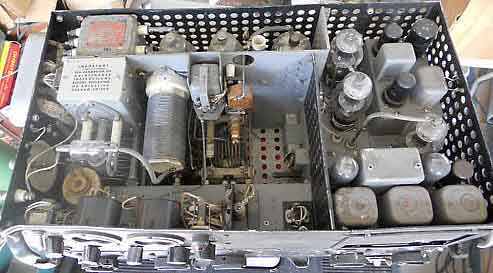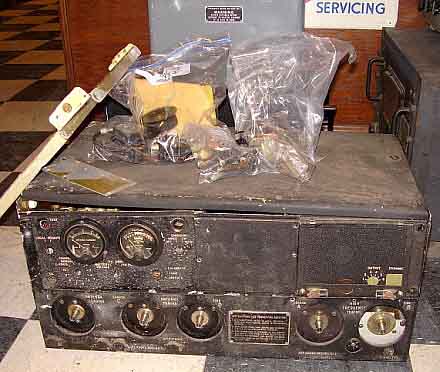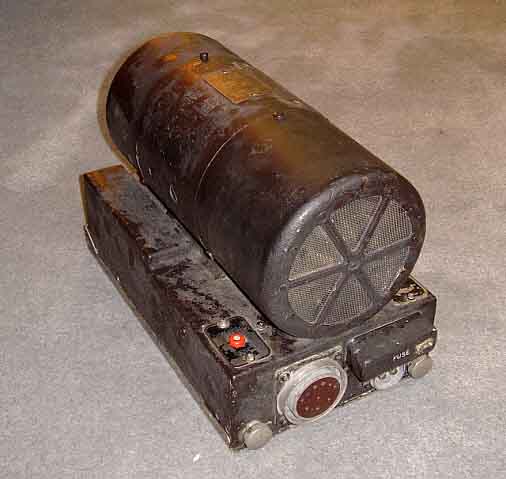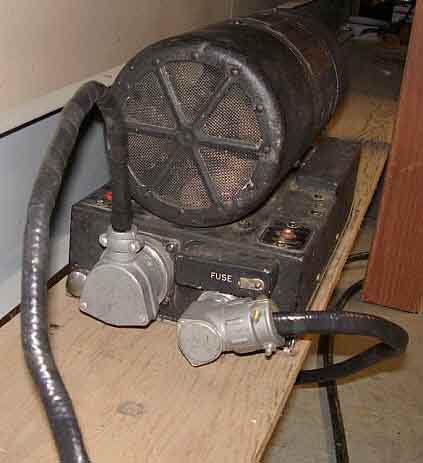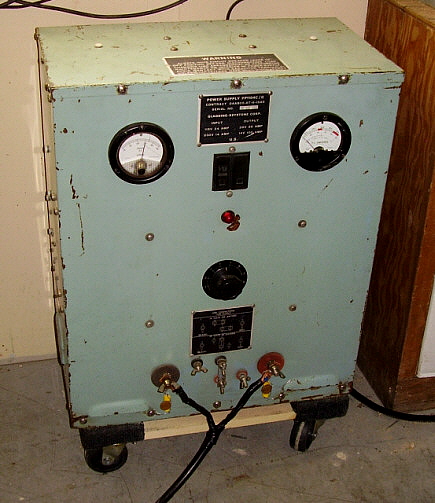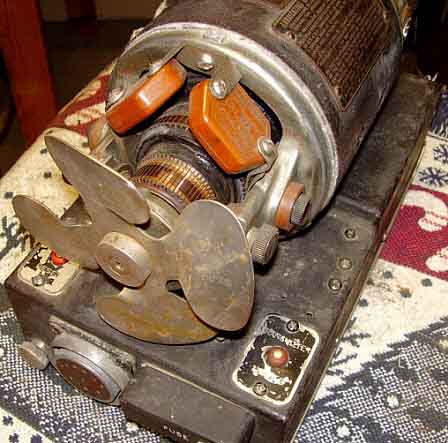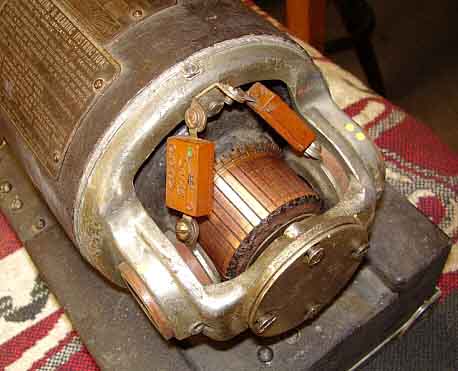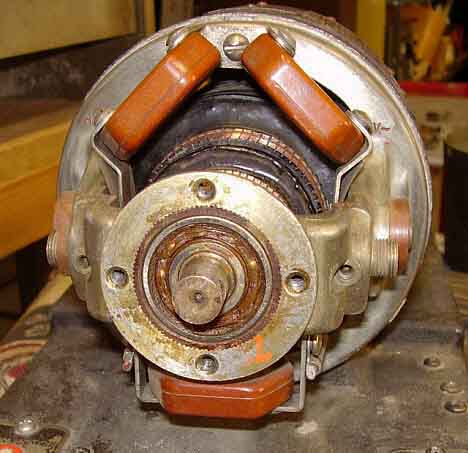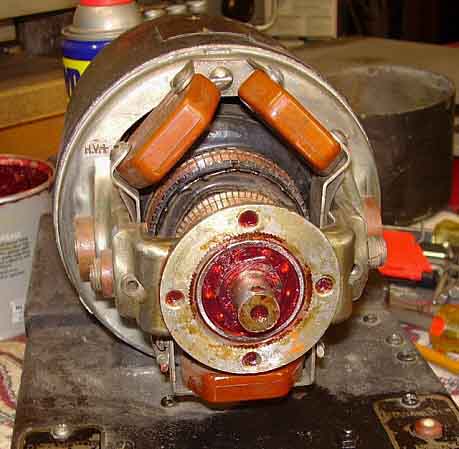|
The Collins T-47/ART-13 is a 100 watt carrier
output, AM-CW-MCW transmitter that was generally used in USN and
USAAF/USAF aircraft but could also be found onboard USN ships as
the TCZ installation. There were even some vehicular uses for
the T-47/ART-13. The T-47/ART-13 was developed from the earlier
Collins ATC Aircraft Transmitter that appeared around 1940. In
1940, the Collins ATC was tested in competition with the Bendix
ATD and possibly the RCA ATB. The Collins ATC won easily as the
competition lacked many of the ATC's modern features. By 1942,
Collins had updated the ATC and designated it as
the T-47/ART-13. The USAAF also wanted to
use the T-47/ART-13 and a very slightly different
transmitter was produced for their use, designated as the
T-47A/ART-13 (later designation was AN/ART-13A.) Probably the first USAAF use of the T-47A/ART-13
was in the B-29 bombers where they were paired with the BC-348
receiver and designated ARC-8. The USN had many installations in Grumman torpedo
bombers and the Curtis Helldiver dive bomber along with
shipboard uses. There was also a T-412/ART-13B that added a 20
channel HF and 4 channel LF oscillator by retrofitting earlier
versions of the ART-13. At the end of WWII, the transmitters were
designated as AN/ART-13, AN/ART-13A and AN/ART-13B. There are
many other different designations assigned to ART-13 transmitters that are
essentially identical to the three basic ART-13 variations.
Various end users account for most designation variations found.
Basic
Transmitter Circuit - The ART-13 uses a permeability tuned
oscillator designated as a VFO (although later these types of
VFOs were referred to as a PTO - permeability tuned oscillator -
by Collins.) The VFO-PTO operates from 1000kc to 1510kc that is tuned
using two ranges that are switched alternately as control A is
changed. The first range is from 1000kc to 1200kc and the second
range is from 1200kc up to 1510kc. The VFO tube is a 837. The
VFO-PTO output is routed to the first Multiplier that increases
the frequency for the various tuning ranges of the
transmitter. Below 6.0mc only the first Multiplier is used as
either a doubler, tripler or quadrupler depending on the
frequency desired. Above 6.0mc the second Mulitplier is also used
(only as a tripler) to achieve these higher frequencies. Two
1625 tubes are used as the Multipliers. The Multiplier(s) feed
the 813 PA and its output is matched to the antenna using a
tuner that can select either an L or a Pi network depending on the
frequency and load matching necessary. Controls C, D and E tune the
antenna matching network. AM is achieved using a 12SJ7 speech amp and a
6V6 amplifier that drive the pair of 811 modulator tubes. CW is
via a keying relay operating the PTT line. The transmitter can
be tuned from 2.0mc up to 18mc.
Power Requirements and
Accessories
-
The T-47/ART-13 power requirements were supplied by a dynamotor
that ran on the aircraft +28vdc battery/charger system. The
aircraft battery buss supplied the +28vdc@10Amps necessary for
the transmitter's tube filaments and relay operation while the
dynamotor provided a dual output of +400vdc and +750vdc. The
dynamotor would have the two B+ levels connected in series for
the HV Plate ( +1150vdc) below 20,000 to 25,000 feet altitude
but a barometric pressure switch (located inside the dynamotor
housing) would separate the outputs at higher altitudes and only
allow +750vdc maximum to prevent arc-over. There were four types
of dynamotors used. The earliest was the DY-11 that was used
with the ATC. The DY-12 was used with the ART-13. The DY-17 was
used with the ART-13A and WWII versions of the ART-13B.
Post-WWII, there was a DY-17A produced. All four dynamotors are
interchangeable to power any ART-13.
The shipboard TCZ featured two types of power supplies, a 115vac
operated, floor-mounted pedestal-type power supply that provided
the required +28vdc, +400vdc and +1150vdc directly to the
transmitter. The 115vac unit utilized a motor-generator that
provided +14vdc and +28vdc @10A (the +14vdc was required for
relay operation inside the AC or DC operated TCZ power supply
and the +28vdc operated the tube filaments and relays in the
transmitter.) The +400vdc and +1150vdc were provided by standard
AC transformer power supplies. The 115vdc operated TCZ power
supply used two dynamotors that ran on 115vdc input and provided
+14vdc and +28vdc output on one dynamotor and +400vdc and
+1150vdc on the second dynamotor. The USMC had a vehicular
set-up that installed an ART-13 transmitter with a BC-348
receiver that operated from the back of a Jeep and ran on the
+28vdc battery system with HV provided by a DY-12 dynamotor. The
antenna was a whip. Power and Remote Receptacles - There are three
large multi-pin connectors on the left side of the cabinet for
applying voltage input, remote control operation and LF control
line. The connectors are marked as follows (from front to rear:)
PLUG U-8/U -
Remote channel select, standby, audio, PTT line (T-R)
PLUG U-7/U - Voltage inputs from dynamotor, PTT line (T-R)
PLUG U-11/U - Low Frequency Loading Coil (Tuner) PTT line (T-R)
The U-11-U connector is only used with the CU-32 Antenna Loading Coil
(LF Tuner.) The U-8/U connector is used with the pilot's
remote that allowed remote control of the ART-13 from the
pilot's seat. Also, receiver remote standby is accessed from the
U-8/U connector. U-7/U is the connector for applying all voltages
to the transmitter and providing the ability to turn the ART-13
"on or off."
|

